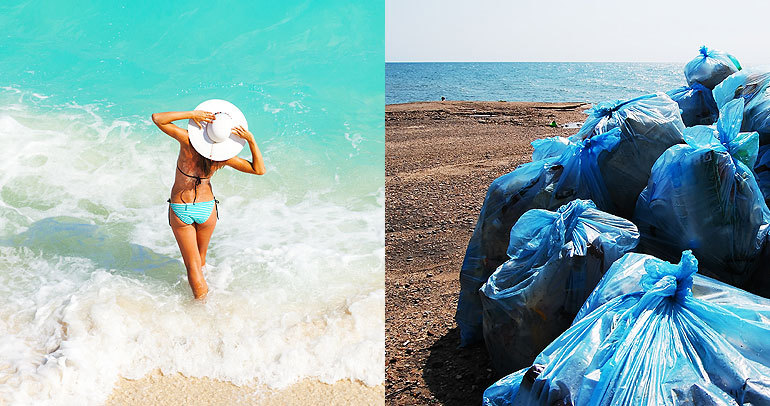
If you’re in marketing and you haven’t seen either of the recent documentaries about the Fyre Festival, then please, treat yourself.
Fyre Festival was a massive con. Billed as a luxury music festival on a private island, attendees were promised posh villas, gourmet food, and marquee acts—for which they paid in advance. The partygoers showed up, but the party never did. Billy McFarland defrauded investors, contractors, and consumers. I hope he serves all six years of his current sentence. (Fun Fact: He’s in the same prison where Jersey Shore’s “The Situation” resides and where Michael Cohen will be bunking soon.)
But that’s not the point of this article. Yes, McFarland is a despicable human. But I would argue that he’s also a masterful storyteller. Let’s separate the fiasco of the event itself from the marketing strategy behind it. Had the festival been what it said it was, it would be written up in like a zillion case studies.
There are lessons to be learned about influencer marketing, social media strategy, storytelling, and millennial marketing. Set aside, for a moment, the unforgivable fraud and the real human costs. Here are five things I took away from watching the Fyre Festival documentaries that go beyond the obvious “don’t lie to people” (which we should remember most of all).
1. The Luxury Music Festival Turned Hunger Games Started as a Great Idea
It gets a little lost in the documentaries, especially the Hulu version. (Pro Tip: Netflix’s was better). But Fyre Festival was conceived as a promotional event to support the Fyre App. The festival was not the product. The festival promoted Fyre Media’s Fyre App, a platform to connect buyers with talent. It was described as “the Uber of talent booking.” Suppose you want your favorite YouTuber to show up at your birthday party. With the Fyre App, you can make that booking directly.
What better way to promote a talent booking app than to invite those who would likely use said services to an exclusive event filled with the type of talent they so desperately seek? And forget the actual festival attendees. The buzz created by an influencer-packed, once-in-a-lifetime experience manufactures a need for the Fyre App. Light your own fire! Curate your own experiences by surrounding yourself with the people available on Fyre App!
Fyre Festival as a promotional event for a talent booking product was simply a great idea.
2. The Promotional Video was an Authentic Fake
The video created to promote Fyre Fest was a calibrated balance of A-roll slickness and B-roll authenticity. It was not a sales pitch. It appeared nowhere as a paid ad. It simply presented a magical place filled with magical people, and you too could be a part of it all. The video never sold the event, never talked about the musical lineup, never said who you’d hear or what you’d see for the price of admission. (Granted, maybe that’s because they didn’t have any musical acts booked at the time.) Perhaps it was the lack of organization at the shoot that lent authenticity to something that wasn’t even real.
The video made you feel like you were getting a ‘first to know,’ ‘behind the scenes’ look at the experience of a lifetime. Who cares if it’s light on details? This was FOMO at its best. Now, it was ridiculously expensive and in hindsight, those funds should have gone to the event itself. Imagine all the porta potties that video could have bought. (For kicks, check out Shutterstock’s recreation of the Fyre Fest promo, using only stock footage.)
McFarland and his team fueled the faux authenticity by encouraging the models in the video to share their own pictures and videos from the shoot. This amplified the realness of the lie. Content shared directly by the models themselves felt like a sneak peek of Fyre Fest in the making.
It also wasn’t only the actual content that worked. It was where and how Fyre’s agency, Jerry Media, placed the video within the course of the consumer journey.
2 ½. A Quick Note on Design Savvy
The Fyre logo is a nice logo. Abstruse yet defined. But that’s not the design I’m talking about. The stroke of genius was using a solid orange scroll-stopping tile, splashed across millions of Instagram feeds. A solid, obnoxious color. Who does that? But it worked.
3. The Road to a Story is Paved with Orange Tiles
It worked because of the influencer marketing strategy. Jerry Media came up with the idea to have all those beautiful people drop their initial posts announcing Fyre Fest at exactly the same time. They also hired hundreds of influencers of different types—models, athletes, musicians and YouTubers. That meant chances were good that the solid orange tile showed up more than once in any given millennial’s feed. All that orange signaled that something was up, something big.
Back in the old-fashioned media days, we referred to something like this as a ‘roadblock.’ The tactic was simple: buy slots across multiple networks at the same time, so no matter how much channel flipping your consumer tries, they can’t escape the onslaught of your message. My first thought was, ‘same thing, right?’ But it’s not the same, not when, instead of a product message, it’s a magical and mysterious story. And it’s also not the same when it is coming from your favorite influencer. It’s the opposite of a roadblock; it’s a path to follow.
To be clear, Jerry Media screwed up by not insisting influencers tag their posts as #ad. That’s a major breach of trust. And the influencers themselves should have known better. That said, I don’t believe they were in on the con. But in the end, all an influencer has is, well, influence. And influence depends on trust.
4. Experience Marketing is About Curating Your Life Story
For over a decade now, we’ve seen the merit badging of life experiences. Instead of buying products, more and more people choose to spend disposable income on experiences that they can relive and retell. The experience becomes part of their story. A conversation starter. A badge of honor. The more rarified the experience, the more unique their personal story becomes.
The idea of Fyre Festival wasn’t just hyper-exclusive in the luxury sense; it was exclusive in the sense that it could only be had once, right here and right now. Now was your chance to live your best life on Pablo Escobar’s private island. Sail with models. Swim with pigs. Be part of the zeitgeist. (If you haven’t seen the documentaries, the Escobar part wasn’t true. The festival grounds were actually on the main island of Great Exuma, in an area that was basically a housing complex construction site.) But had it all been real, oh the stories you could have told!
Even the cashless wristband scam was, I would argue, part of creating a seamless story. McFarland set up the scheme because he needed the festival-goers to part with their cash up front. I can’t help but think he also (in his demented reality) imagined a more fluid and in-the-moment experience and thus a more memorable story.
5. Millennials Weren’t Stupid for Believing It
I admit. Initially, I didn’t feel much empathy for the festival-goers. The documentaries didn’t want me to. Those silly, insecure Instagramians. Don’t they check their facts? (Actually, many tried, and their posts were deleted.) The sight of all those youthful attendees suffering the indignity of FEMA tents and sad cheese sandwiches was, well, you know. Schadenfreude.
But then, after wrestling a bit with my better nature, I started thinking about how millennials have lived through plenty of scams, the worst being the subprime mortgage crisis that hit many fresh out of college. They have a good scammer radar. They have far better social media literacy skills than their predecessors. They are arguably more discerning. They rely on reviews and referrals while being wary of traditional marketing pushes. They trust people more than they trust brands. And they trust those in their social networks the most.
We tend to fall back on a millennial cliché—buried in their phones, disengaged from the world. But Millennials spend more of their income on socializing and on experiences than Gen Xers and Baby Boomers. They crave human connection and seek out stories they can inhabit and make their own. Travel is a key beat in their life story.








